Creating a parrot drawing can be a delightful and rewarding artistic endeavor. Begin by sketching the basic outline of the parrot, focusing on its distinctive features such as the vibrant plumage, curved beak, and expressive eyes. Pay careful attention to capturing the bird’s unique posture, whether it’s perched on a branch or in flight. Once the initial sketch is complete, add layers of detail to bring the parrot to life.
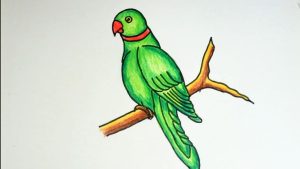
Exploring the Art of Parrot Drawing
Parrot Drawing, with their vibrant plumage and playful personalities, have captivated artists for centuries. Their beauty and complexity make them a popular subject for drawing, offering endless possibilities for exploration and expression.
Anatomy and Form:
The first step to drawing any animal is understanding its anatomy. Familiarize yourself with the basic structure of a parrot, including the beak, head, body, wings, legs, and tail. Pay attention to the proportions and relative sizes of these elements.
Capturing Colors and Textures:
Parrots boast a kaleidoscope of colors, from fiery reds and oranges to deep blues and emerald greens. Use a variety of drawing materials, such as colored pencils, crayons, or paints, to capture the vibrancy and richness of their plumage. Experiment with different techniques to represent the texture of feathers, such as layering, hatching, and stippling.

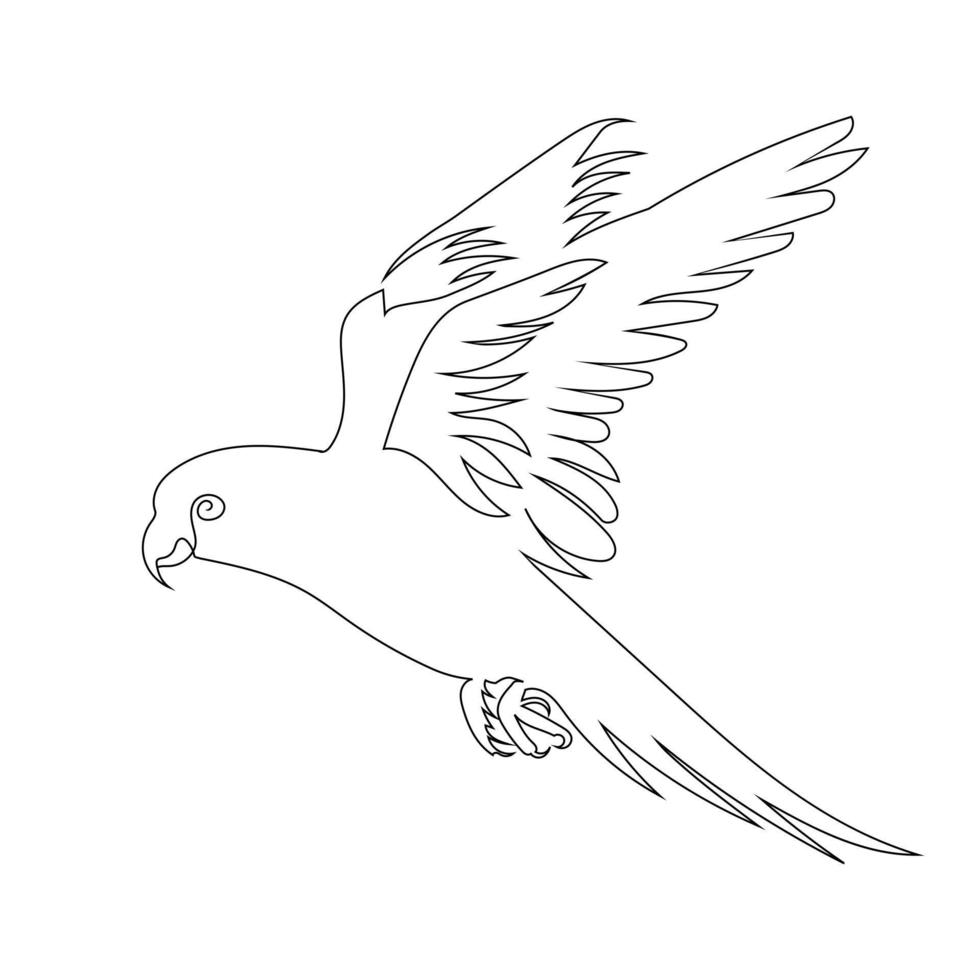
Mastering the Palette for Parrot Art
When it comes to parrot art, color takes center stage. Their plumage is a symphony of vibrant hues, offering endless possibilities for palette creation. Mastering the colors for your parrot artwork can elevate it from simple representation to a celebration of these feathered jewels.
Understanding Color Theory:
- Primary Colors: Start with the basics – red, blue, and yellow. These vibrant pigments can be mixed to create all other colors.
- Secondary Colors: Learn how to mix primaries to create secondary colors like orange, green, and purple. This gives you a foundation for building diverse palettes.
- Tertiary Colors: Mixing a secondary color with a primary creates a tertiary, expanding your range further. Explore combinations like olive green, magenta, and burnt orange.
- Color Harmonies: Understand how colors relate to each other. Analogous harmonies use neighboring colors on the color wheel, creating cohesive schemes. Complementary harmonies utilize opposites on the wheel for high contrast and vibrancy.
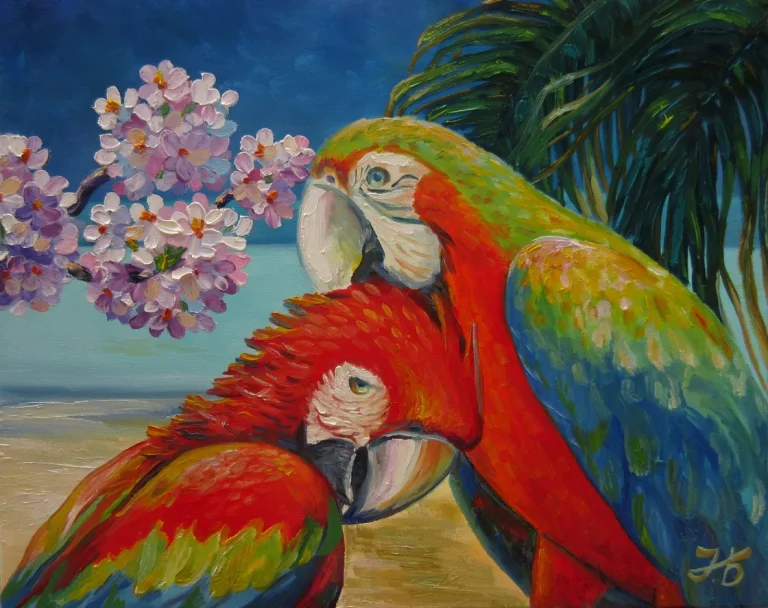
Conveying Personality in Parrot Portraits
Breathing personality into your parrot portraits goes beyond capturing their vibrant plumage. It’s about delving into their mischievous minds, sparkling eyes, and playful antics. Here are some ways to infuse your artwork with parrot personality:
Body Language and Posture:
- Head tilts: A curious tilt inquisitively follows a sound, while a haughty tilt displays dominance.
- Preening: Delicate feather grooming hints at vanity or contentment, while ruffled feathers convey anger or anxiety.
- Footplay: Clutched claws suggest nervousness, while a cheeky foot tapping speaks of curiosity or mischief.
- Wing positions: Open wings might showcase pride or playfulness, while tucked wings could show fear or exhaustion.
Expressions and Details:
- Eyes: Sparkly eyes brim with mischief and intelligence, while narrowed eyes express suspicion or focus.
- Beaks: Open beaks can be playful chatterboxes, hungry calls, or surprised gasps. Closed beaks might reveal thoughtful silence or mischievous plotting.
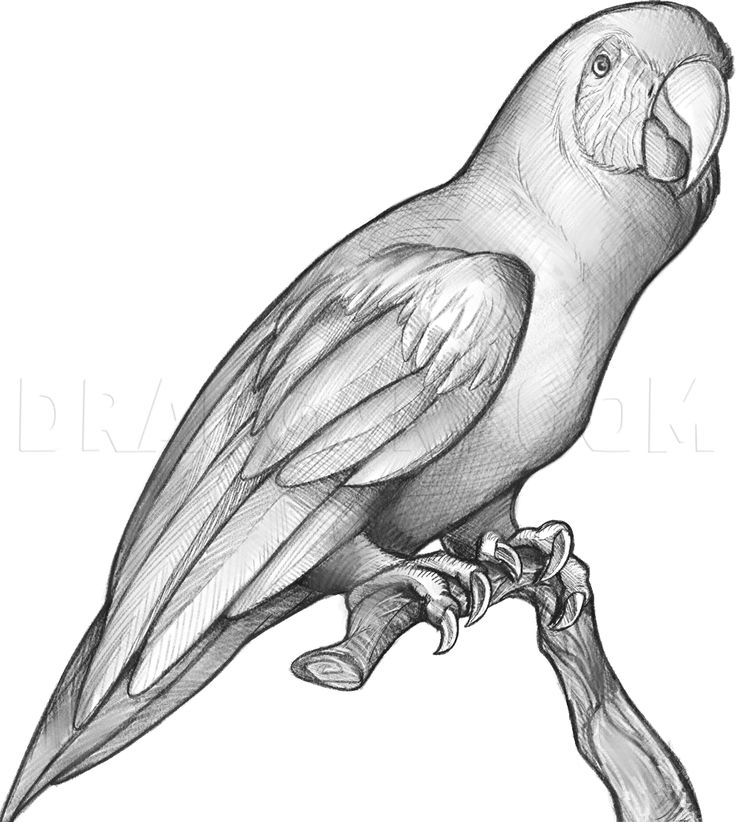
Drawing Dynamic Parrots in Action
Bringing parrots to life with dynamic movement and action opens up a whole new dimension in your artwork! Here are some tips to capture their energetic spirit and translate it onto your canvas:
Capturing the Moment:
- Study real parrots in motion: Birdwatching in parks or watching videos can reveal a wealth of dynamic poses and movements. Analyze their wing extensions, acrobatic flips, and playful leaps.
- Sketch quick gestures: Use light, loose strokes to capture the essence of movement before it fades. Don’t worry about details, focus on the flow and direction of the body.
- Break down the action: Divide the movement into key frames, like the take-off, mid-flight, and landing. This simplifies understanding the body’s position and trajectory.
Composition and Perspective:
- Experiment with angles: Don’t just draw parrots head-on! Try dynamic angles to emphasize movement, like a soaring bird from below or a swooping dive from above.
- Utilize leading lines: Create lines with the body or wing direction to guide the viewer’s eye through the action. Think of it as creating a visual path for the movement.
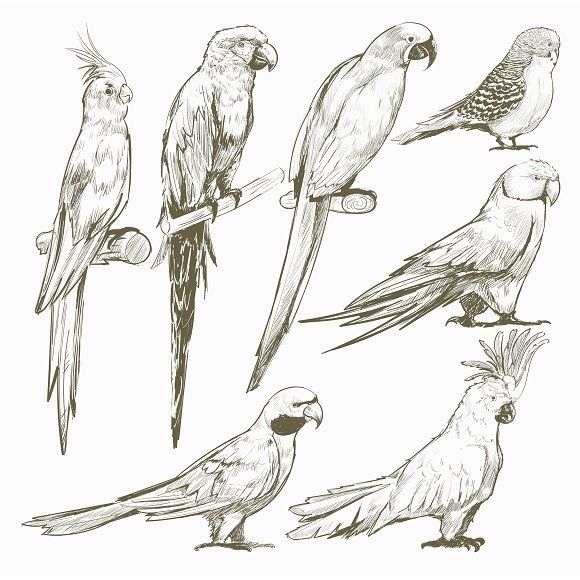
Creating Stunning Parrot Artwork
Now that you’ve explored various facets of drawing stunning parrot artwork, let’s bring it all together for a masterclass in avian artistry! Here’s a comprehensive guide to create masterpieces that capture the vibrant essence and captivating spirit of these feathered marvels:
1. Choose Your Focus:
- Realistic Portrait: Focus on capturing the precise details of plumage, anatomy, and expression. Reference photos and study birdwatching guides to accurately render feathers, beak textures, and subtle eye nuances.
- Dynamic Action: Freeze their playful acrobatics in motion. Use loose strokes, blurred feathers, and dramatic angles to convey the energy and agility of parrots in flight or play.
- Whimsical Interpretation: Let your imagination take flight! Experiment with exaggerated features, vibrant color palettes, and fantastical settings to create whimsical illustrations that showcase the playful personality of parrots.
Perfecting Plumage in Parrot Illustrations
The plumage of a parrot is its crown jewel, a symphony of vibrant colors and intricate textures that define its beauty and personality. Bringing these feathered masterpieces to life in your illustrations requires careful attention to detail and a deep understanding of how to translate their captivating complexity onto the page or canvas.
1. Mastering the Anatomy of Feathers:
Before diving into color and texture, familiarize yourself with the basic structure of a feather. Each feather consists of a central shaft, called the rachis, with barbs branching out on either side like tiny hairs. These barbs interlock with tiny hooks called barbules, creating a smooth, protective surface.
Frequently Asked Questions (FAQs)
- Start with simple shapes: Begin by sketching basic shapes like circles, ovals, and rectangles to represent the head, torso, and limbs. This will help you build a foundation for your drawing before adding details.
- Pay attention to proportions: The proportions of a girl’s body are generally different from those of a boy. For example, the head is typically larger in proportion to the body, and the waist is narrower than the hips.
- Oversexualization: Avoid drawing girls in overtly suggestive poses or clothing. Focus on capturing their personality and individuality rather than their physical attributes.
- Clichés and stereotypes: Don’t fall into clichés like damsels in distress or overly bubbly princesses. Be creative and explore diverse representations of girls.
- Art books and tutorials: There are many great books and online tutorials available that can teach you how to draw girls in different styles. Look for resources specifically focused on female figure drawing or character design.
- Online communities: Join online communities or forums for artists who draw girls. This is a great way to get feedback on your work, learn from others, and stay inspired.




















